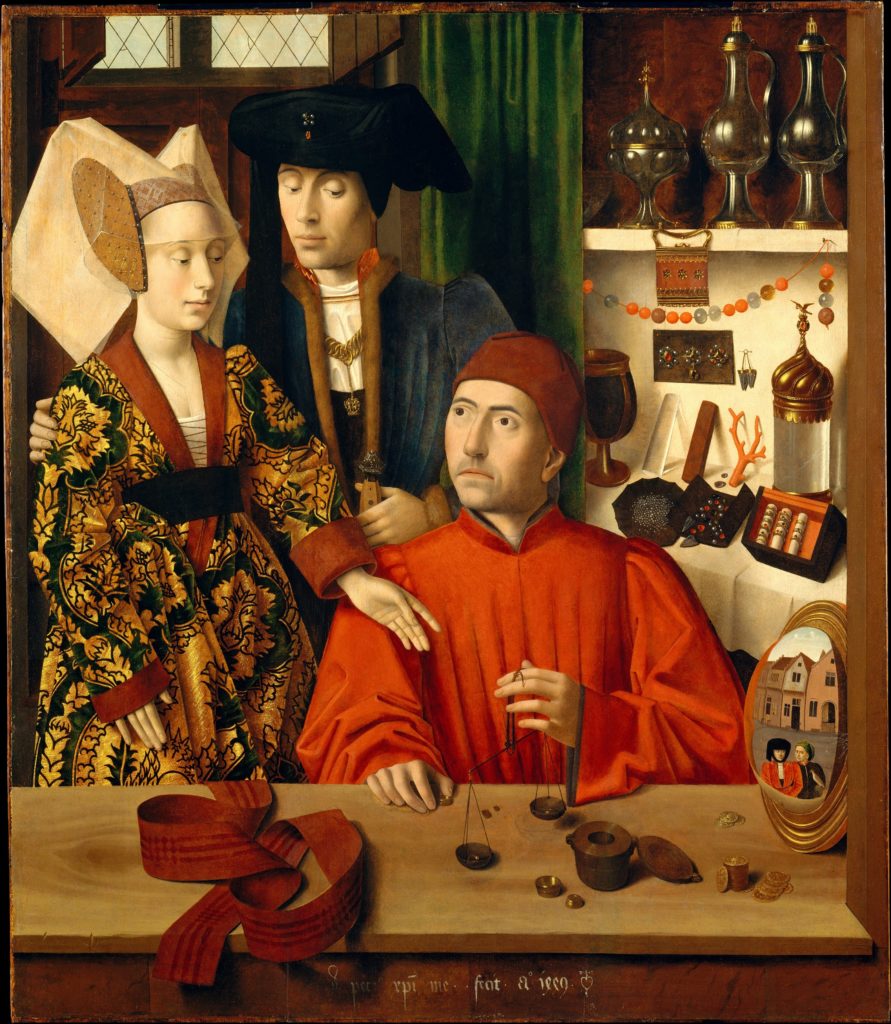A Goldsmith In His Shop
Petrus Christus (c. 1410/1420 – 1475/1476) was an Early Netherlandish painter active in Bruges from 1444, where, forth with Hans Memling, he became the leading painter after the death of Jan van Eyck. He was influenced past van Eyck and Rogier van der Weyden and is noted for his innovations with linear perspective and a meticulous technique which seems derived from miniatures and manuscript illumination. Today, around 30 works are confidently attributed to him.
Christus was an bearding figure for centuries, his importance not established until the work of modern art historians. Giorgio Vasari barely mentions him in his biographies of painters, written in the Renaissance, and most contemporary records merely list him among many others. Today we want to nowadays 1 of his masterpieces, A Goldsmith in his Store.

The panel attests to Netherlandish artists' keen interest in pictorial illusionism and attention to detail, particularly in the luminous jewellery, glass, and metallic objects, secular and ecclesiastic merchandise wares that are examples of the goldsmith'south virtuosity. The main figure in this enigmatic painting was long identified as Saint Eligius who is the patron saint of goldsmiths, due to the presence of a halo, which was recognized every bit a later on improver and subsequently removed.
But the console is likely a vocational painting, which portrays the profession of goldsmithing and perhaps a specific goldsmith—it may be a portrait. Some art historians suggested that he is Willem van Vleuten, a Bruges goldsmith who worked for Philip the Good, knuckles of Burgundy. In 1449, the appointment of this painting, the duke commissioned from van Vlueten a souvenir for Mary of Guelders on the occasion of her marriage to James 2, King of Scots. That couple may well exist depicted in this painting, portrayed buying a wedding ring that is being weighed on a scale. The girdle that extends over the ledge of the shop into the viewer's space is a further allusion to union. The convex mirror, which links the pictorial infinite to the street exterior, reflects two young men with a falcon (a symbol of pride and greed) and establishes a moral comparison between the imperfect globe of the viewer, and the earth of virtue and balance depicted here.
Find out more:
[easyazon_image align="none" height="500″ identifier="B00PRE8XCQ" locale="US" src="https://www.dailyartdaily.com/wp-content/uploads/2018/02/51tGBn1lqcL.jpg" tag="dailyartdaily-twenty″ width="339″]
[easyazon_image align="none" height="500″ identifier="0271006722″ locale="US" src="https://www.dailyartdaily.com/wp-content/uploads/2018/02/41v2B0Y3uTL.jpg" tag="dailyartdaily-20″ width="380″]
A Goldsmith In His Shop,
Source: https://www.dailyartmagazine.com/petrus-christus-a-goldsmith-in-his-shop-2/
Posted by: burgessnatch1943.blogspot.com


0 Response to "A Goldsmith In His Shop"
Post a Comment